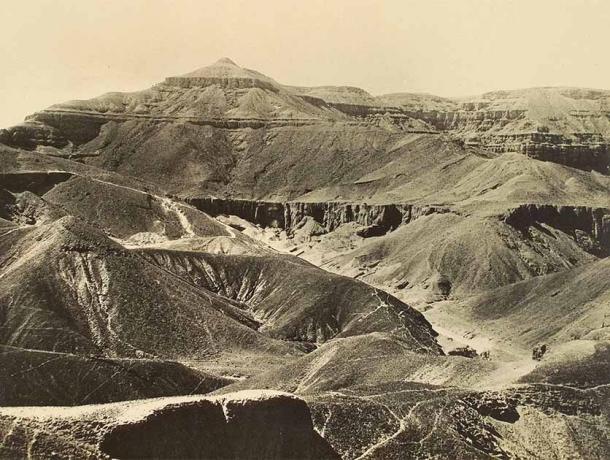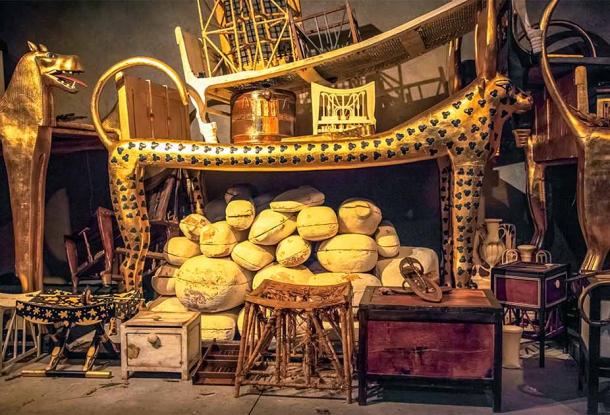
King Tut’s Centenary! 6 Fascinating Facts About Tutankhamun’s Tomb
100 years ago today (November 4th) British archaeologist Howard Carter discovered King Tutankhamun’s legendary tomb. This famous discovery was essential in the field of archaeology, as it became historians’ primary source of knowledge about ancient Egyptian tombs and burials. Though you’ve probably heard a lot about the famous King Tutankhamun, how much do you know about his tomb’s actually discovery back in 1922? In honor of this centennial celebration, here are six fascinating facts about the discovery of King Tut’s tomb.
1. Many Believed King Tut’s Tomb Was Lost
Finding King Tut’s tomb was no easy feat. Around the time of its discovery, many archaeologists believed that the tomb either did not exist or had been destroyed by the sands of time. Many other tombs had already been uncovered in the region, so the discovery of another seemed unlikely. Luckily, the doubts of others didn’t stop Howard Carter’s determination.
With a bit of persistence and luck, Carter and his team stumbled across the top steps of the tomb in the middle of the Valley of the Kings. The tomb itself was found under nearly 150,000 pounds of rock and debris and took six years to excavate. In the end, they found King Tut’s tomb, sarcophagus, mummy, and over 5,000 objects, many of which were made of gold.

Photograph depicting the Valley of the Kings in 1922, at the time of the discovery of King Tut’s tomb located near the central path shown in the image. (Public domain)
2. Carter Was Not the Tomb’s First Intruder
Though Carter is credited as the archaeologist who discovered King Tut’s tomb, there were actually at least two prior intruders in the tomb. Archaeologists analyzed the tomb’s doorways and discovered that they had been broken into and later resealed at least twice. Analysis of the resealed construction suggests that these break-ins occurred around 3,000 years before Carter’s team stumbled across the tomb’s entrance. The tomb looters likely took smaller objects, such as rare beads and jewelry, since many larger items still remain.
- The Boy King Behind the Mask: Tutankhamun’s Life and Legacy
- Everyone Knows the Mask of King Tut, but Have You Seen Any of the 5,000 Other Treasures from His Tomb?
3. Tutankhamun’s Remains and Belongings Stayed in Egypt
Though many of the objects discovered in prior excavations were removed from Egypt for analysis, the Egyptian government demanded that King Tut and his belongings stay put. Egypt was in the process of asserting its independence from the British during the time of the discovery of King Tut’s tomb, so this demand was part of such negotiations. To study these artifacts in more detail, some archaeologists have made replicas of the discovered objects for analysis and display outside of Egypt.

Reconstruction of the way King Tut’s tomb was discovered with all its treasure. (Jaroslav Moravcik / Adobe Stock)
4. King Tut’s Tomb Was Actually the Smallest in the Valley of the Kings
While giant, splendid tombs were a central part of ancient Egyptian king burials, this was seemingly not the case for King Tut. Compared to other royal tombs in the Valley of the Kings, King Tut’s tomb was the smallest and least lavish of all. His cramped tomb was found cut into the floor of the valley, with little room to navigate. This tiny tomb has led archaeologists to question the cause behind this decision.
Some archaeologists have proposed that King Tutankhamun didn’t have enough time to build a more lavish tomb before his young death at only 19. Others, however, point out that other kings were able to produce much higher-quality tombs within two or three years. King Tut’s lack of preparation seems unlikely. Instead, some propose that his successor, King Ay, simply swapped tombs with Tutankhamun so he could have a more lavish burial prepared. Plus, archaeologists still working on the site have proposed that there may be undiscovered hidden chambers at King Tut’s tomb, though only time will tell if there is any truth behind this theory.
5. Tutankhamen Was Found Without a Heart
One of the most interesting facts about King Tut’s discovery is that he was found without a heart. While this may seem of little importance, the heart was an organ of great significance in ancient Egyptian culture. Ancient Egyptians believed that the heart was the primary organ of thought, rather than the brain. While most organs would be removed in mummification, Egyptians believed that the heart had to remain so the deceased could enter the afterlife.
King Tut’s mummy not having a heart would have meant that he was unable to reach the afterlife per Ancient Egyptian belief. Though it is not entirely clear why his heart was missing, some scholars believe it could have been taken by an enemy at some point to prevent King Tut from reaching the afterlife.

The Russian doll nature of the shrines and sarcophagus of Tutankhamun’s tomb. Je-str / CC BY-SA 3.0
6. King Tut Had Three Coffins - And They Probably Weren’t All His
It sounds like overkill, but King Tut’s mummy was actually discovered inside three different coffins. Archaeologists who discovered the tomb described them as nested inside one another, similar to Russian nesting dolls. The two outer coffins were made of red quartzite and wood, but the innermost coffin was made out of a thick layer of beaten gold. The lid to the coffins was also made out of thick gold, making the coffin combination the most expensive in the world.
- KV62, Designed to Confound: Wealth of Mysteries in the Curious Tomb of Tutankhamun
- Spanish Leak Reveals Hidden Chamber in Tutankhamun Tomb is Full of Treasures
Archeologists have done significant research on each of these coffins. In their research, they acknowledged that the middle coffin is significantly different than the other two. It was slightly different in style and its face did not match the face displayed on the other coffins or on Tutankhamun’s death mask. Because of this, some archaeologists believe the middle coffin was once destined for another individual (possibly Tut’s predecessor, Neferneferuaten) but was instead used for King Tutankhamun for an unknown reason.
King Tut’s Tomb Provides 100 Years of Inspiration
Historians have learned a lot about ancient Egypt thanks to Howard Carter’s famous discovery. This discovery inspired countless archaeologists in the last 100 years to dig deep and pursue greatness in their field. Since then, even more has been determined about ancient Egypt through artifacts, ancient texts, and additional tombs, such as the five 4,000-year-old tombs discovered by archaeologists this past in March 2022. While new discoveries are ongoing, one thing is for certain: the inspiration that has fueled archaeologists for centuries isn’t going anywhere anytime soon.
Top image: Tutankhamun’s golden death mask as discovered in King Tut’s tomb. Source: Tarekheikal / CC BY-SA 4.0
By Lex Leigh
References
AFP. 17 March 2016. “Facts on Tutankhamun's tomb” in Phys.org. Available at: https://phys.org/news/2016-03-facts-tutankhamun-tomb.html
History.com Editors. 1 November 2022. “Tutankhamun” in History. Available at: https://www.history.com/topics/ancient-history/tutankhamen
History.com Editors. 4 March 2010. “Entrance to king tut's tomb discovered” in History. Available at: https://www.history.com/this-day-in-history/entrance-to-king-tuts-tomb-discovered
Scriber, B. 21 October 2022. “10 things to know about the discovery of King Tut's tomb” in History. Available at: https://www.nationalgeographic.com/history/article/10-things-to-know-about-the-discovery-of-king-tuts-tomb
Tyldesley, J. 26 October 2022. “Your guide to tutankhamun, plus 8 fascinating facts” in History Extra. Available at: https://www.historyextra.com/period/ancient-egypt/8-things-you-probably-didnt-know-about-tutankhamun/
















Comments
Facts?
Nobody gets paid to tell the truth.